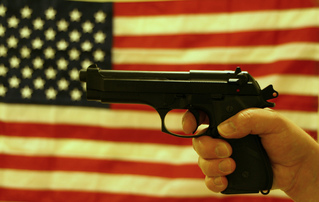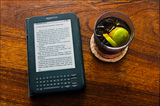
After contact with several gun control groups, six months ago it was suggested that I try and shape that proposal into something which could be put before Congress. Further research and contact with interested parties has added some enhancement, but the core proposal remains unchanged.
In the wake of the Sandy Hook massacre, the call for something to finally be done has of course increased. I personally have been involved in signing two petitions to the White House, one of which already has over 500,000 signatures (far more than the 100,000 asking for Piers Morgan's deportation, I might add :) Again I was asked to finalize my own proposal for Congress, to serve either as a rider or follow-up to these petitions.
Anyone who knows the background to the writing of The Second Amendment and my lobbying efforts and comments since, will also know that part of this proposal is based on Swizerland's 'at home' private militia. It is indeed ironic that the NRA has ofted cited Switzerland as an ideal example of a nation with a high gun ratio yet a low gun crime rate, as if to support that there is no correlation between the two.
However, Switzerland's guns are strictly controlled along the lines set out below and their model is in fact far closer to the original ethos of the 2nd Amendment than the current free-for-all in the USA. It's also worth noting that the following proposal falls in line with recent US Supreme Court rulings that the 'right' of US citizens to bear arms may also be for personal protection and security, not just for national militia/security reasons.
Ten-point plan:
1. Every US home to have a gun (with current 'clearance' procedures observed). In most cases this would be a hand gun (range of choice of .38, 9mm and .45 caliber). Some may opt to have a single-shot rifle instead.
2. All weapons to be kept at home in a pin-number controlled lock-box. Those anti-gun who do not wish to have a gun at home may opt to have their weapon held in store by an elected neighbourhood-watch warden (store also pin-control locked).
3. No guns under any circumstances to be carried in the open on the streets. Current 'conceal carry' laws in certain States to be revoked. The only exception would be some hunting, farming and 'open range' areas.
4. Strict induction and training in use of the weapons, along with signed agreement as to their use: only for national security, should the nation come under threat, or for personal protection of life, limb or property.
5. If the pin-controlled boxes are opened, an alarm sounds with local police and with local wardens. This then would have the effect of calling assistance in the case of threat; but in the case of wrongful use (such as shooting a neighbour, family member or fellow US citizen outside of purely personal protection) could lead to arrest and conviction.
6. Mid-level neighbourhood wardens could have both a handgun and a rifle in their care under pin-lock. High-level neighbourhood wardens could also hold semi-automatic or assault rifles. These local wardens would be elected between the local police and neighbours, and would also normally have had police, military or gun association training.
7. The general aim would be to have an effective and highly-trained private militia force, on call and ready in the face of any national threat or emergency. While at the same time giving sufficient provision for private US citizens to protect their own family and property from threat or attack.
8. Amnesty on all guns currently in circulation. In many cases these could be exchanged for the newly-designated lock-box guns or rifles. This amnesty would be without questioning of individuals or recrimination, penalty, fines or charges for any illegal weapons handed in.
9. Heavy penalties and charges for anyone carrying illegal weapons after the amnesty period, or for carrying weapons on the streets, towns or in urban areas. 3-5 year minimum penalties. It is accepted that even with an amnesty in place coupled with stricter control laws, it could take some time to see a reduction in the number of illegal guns. However, in the meantime US citizens would be fully protected by having their own guns at home, as well as fuller training as to their use and a more effective neighbourhood back-up force in the case of emergency (national or private).
10. Individual States may wish to propose the use of 'smart guns' as the at-home weapon of choice for individuals. These would have radio-controlled firing mechanisms which would prevent them from being fired beyond a certain radius of the designated home.
Advantages
A. The proposal falls more in line with the original ethos of the 2nd Amendment and would provide for a far more efficient private militia force than the current free-for-all whereby 98% of gun attacks are against fellow US citizens.
B. The induction and training would further bolster and enhance that private militia force, as well as generally teach people more respect regarding use of their guns, in terms of both safety and proficiency.
C. The pin-controlled boxes would at the same time protect the guns from theft by house-robbers or the danger of children gaining access to them (an increasing problem).
In summary, if indeed this or a similar proposal was adopted, it is perhaps suitably ironic that a return to the 'grass roots ethos' of The Second Amendment would not only create a stronger, more proficient and 'well-regulated' private militia force, which was the original intention, it would also lead to saving an increasing number of US lives.

 RSS Feed
RSS Feed